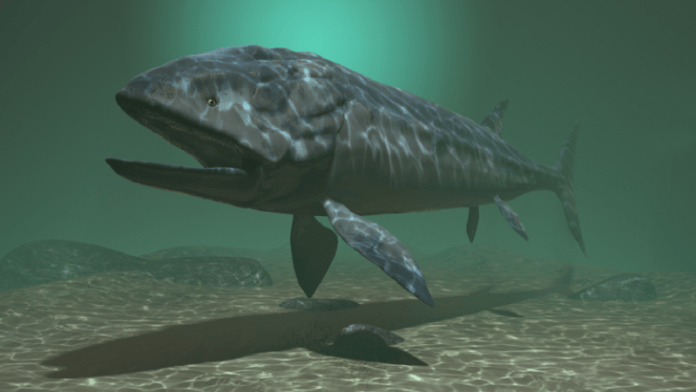Scientists have discovered bone fragments from the flipper-like limbs and spine of an aquatic reptile from the Jurassic period that dug in thousands of feet above sea level in the Malone Mountains of West Texas.
The new discovery provides a window into the shallow sea that once covered the arid deserts of northeastern Mexico and western Texas 150 million years ago, reports Al-Rai daily.
Texas during the late Jurassic period, the era of the largest and most famous dinosaurs on Earth, remains largely a mystery to paleontologists due to the limited number of intact Jurassic rock formations throughout the state.
Almost all of the rest of the ocean floor in Jurassic Texas can be found along just 13 square miles of rock above the Malone Mountain Range. But with this new discovery of plesiosaurs, the search for more fossils began.
“Geologists will go out there looking for more bones and they will find it,” said vertebrate paleontologist Louis Jacobs, co-author of the new study.
The weathered remains of the plesiosaurus were discovered during two fossil-hunting expeditions led by geologist Steve May, a research associate at the University of Texas at Austin.
“There is more to be discovered that can tell the story of what this part of Texas was like during the Jurassic period,” May said in a statement from the University of Austin.
May hopes the study, published this week in the peer-reviewed journal Rocky Mountain Geology, will spur more dinosaur hunting in Malone.
Prior to May’s discovery, the only fossils found in Texas from the Jurassic period were ancient shell-like invertebrates, including ammonites and snails. But May and his team have found key evidence that larger fossil remains are still found in the Lone Star State.
A 1938 paper on the geology of the Malone Mountains by future professor of geology at Southern Methodist University (SMU), Claude Albriton, in passing pointed to large, unknown bone fragments. The lead was enough to lure May to the Malone Range, after a geologist learned in 2015 that there were no Jurassic bones currently in the Texas fossil record.
“You just don’t want to believe there are no Jurassic bones in Texas,” he said. During the Jurassic period, the sediments that would become the Malone Range settled a few miles offshore in prehistoric times.

















